With long days, vibrant landscapes, and seemingly endless opportunities for outdoor adventure, summer is the most popular time to visit Norway, with very good reason.
From the iconic fjords of the west to the quiet charm of northern fishing villages bathed in midnight sun, the Norwegian summer delivers unforgettable moments.
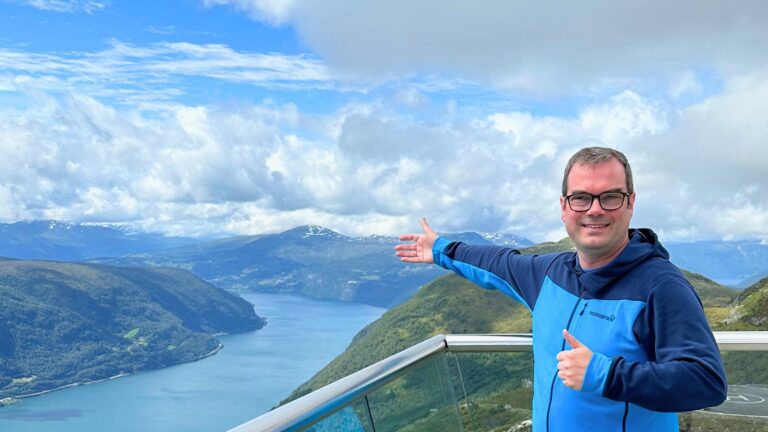
But it's not all mountain hikes and scenic selfies. As beautiful as the season is, it comes with its challenges: crowds, high prices, and the kind of unpredictable weather that keeps you checking the sky even when it’s blue.
If you're planning a trip, or weighing up the best time to visit Norway, here’s a look at the many reasons to love summer travel in Norway, and a few things to keep in mind before you go.
The Pros of Visiting Norway in the Summer
Let’s start with the good news. Summer in Norway is nothing short of spectacular. From endless daylight to fully accessible nature, there are plenty of reasons why this season draws travellers from all over the world.
🇳🇴 Norway Travel Resources: Make the most of your summer trip by bagging the best deals in advance:
🛏️ Hotel Bookings
💊 Travel Insurance
🚘 Car Rental in Norway
📸 Book Norway Tours & Experiences
1. Long Days and Midnight Sun
One of the defining features of summer in Norway is the sheer abundance of daylight. In the far north, above the Arctic Circle, the sun doesn’t set at all for weeks.
In Tromsø, the midnight sun lasts from mid-May to late July. Further south, places like Trondheim and Bergen still enjoy very long days, with a soft twilight lingering well past midnight.
This natural phenomenon completely transforms how you travel. Hikes don’t need to be squeezed into daytime hours. You can take a scenic drive at 11pm or sit by a fjord with a picnic at midnight. There’s no need to rush back to your hotel before dark, because there simply is no dark.
It’s not just practical, it’s magical. The light at midnight isn’t harsh. It’s golden, low, and atmospheric, casting long shadows and soft glows that make even familiar landscapes feel otherworldly.
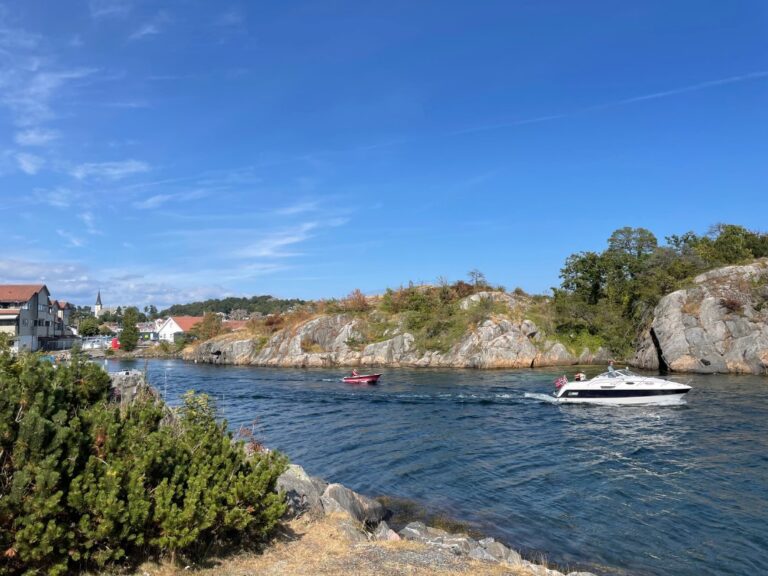
Photographers, take note: the golden hour in Norway’s summer can last for hours.
2. Nature in Full Bloom
Summer is when Norway’s nature truly wakes up after a long winter.
Meadows burst into colour with wildflowers. Mountainsides turn lush and green. Fruit trees blossom along fjord farms in Hardanger. In the forests, birdsong returns, and reindeer roam freely across northern mountain plateaus.
If you’re interested in hiking, kayaking, cycling, or wild camping, this is the time to go. Many of Norway’s most iconic hikes, including Trolltunga, Preikestolen, and Besseggen Ridge, are only accessible in summer once the snow has melted.
You’ll also find countless lesser-known trails and viewpoints, especially in national parks and along the coast. Hiking in Beitostølen, for example, is a great shout.
Whether you’re paddling through Nordland’s archipelagos, hiking in Dovrefjell hoping to spot a musk ox, or picking cloudberries in the north, summer is a gift to outdoor lovers.
3. The Best Weather You’re Likely to Get
Let’s be honest. Norwegian weather can be unpredictable in any season. But if you’re hoping for sun, dry days, and pleasant temperatures, summer gives you the best chance.
In the south and along the Oslofjord, daytime highs often reach 20 to 25°C, sometimes climbing to 30°C during a heatwave. Inland regions like Telemark and Eastern Norway can get even warmer.
In the north, temperatures tend to be more modest, usually between 15 and 20°C, but the long days make it feel surprisingly warm.
The warmth transforms how you experience the country. You can swim in lakes, sunbathe on a rocky outcrop by a fjord, or enjoy long meals outdoors. It’s also the only time of year when packing light is truly possible, which is something of a luxury in Norway.
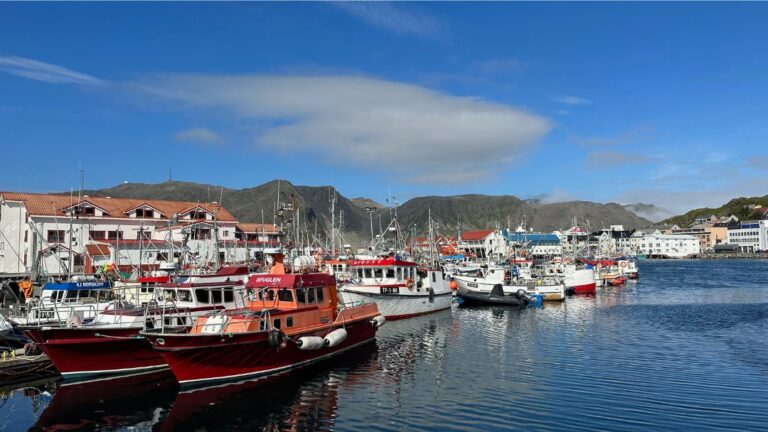
Just don’t forget your raincoat. The western fjord region is as green as it is for a reason.
4. Accessibility and Transport Options
Unlike in winter, when some roads, ferries and hiking trails close or operate on reduced schedules, summer opens up the entire country.
Scenic drives such as the Trollstigen mountain road and the Atlantic Ocean Road are fully accessible. Car ferries and express boats run frequently. Mountain railways like the Flåm Railway or the Rauma Line are at their most scenic.
It’s also an ideal time to explore by train, bus, or bicycle. The Bergen Line, which crosses the Hardangervidda mountain plateau, is breathtaking in summer. The same goes for the Hurtigruten and Havila coastal voyages, where long days and clear skies offer some of the most memorable views of the year.
Museums, cultural attractions and festivals are also in full swing. In smaller towns and on remote islands, you might stumble upon art exhibitions, concerts in historic churches, or quirky local celebrations ranging from Viking reenactments to seafood feasts.
The Cons of Visiting Norway in the Summer
Of course, no season is perfect. Summer in Norway offers plenty of advantages, but it also comes with a few challenges. Here are some things to be aware of before you pack your sunglasses and hiking boots.
1. Tourist Crowds at Popular Spots
With so many natural and logistical advantages, it’s no surprise that summer is the busiest time of year.
Cruise ships dock daily in popular fjord towns like Geiranger, Flåm and Ålesund, bringing thousands of day-trippers.
Pulpit Rock sees a steady stream of hikers throughout the high season. Lofoten, once a remote and peaceful fishing archipelago, now draws photographers and influencers to its white-sand beaches and dramatic peaks.
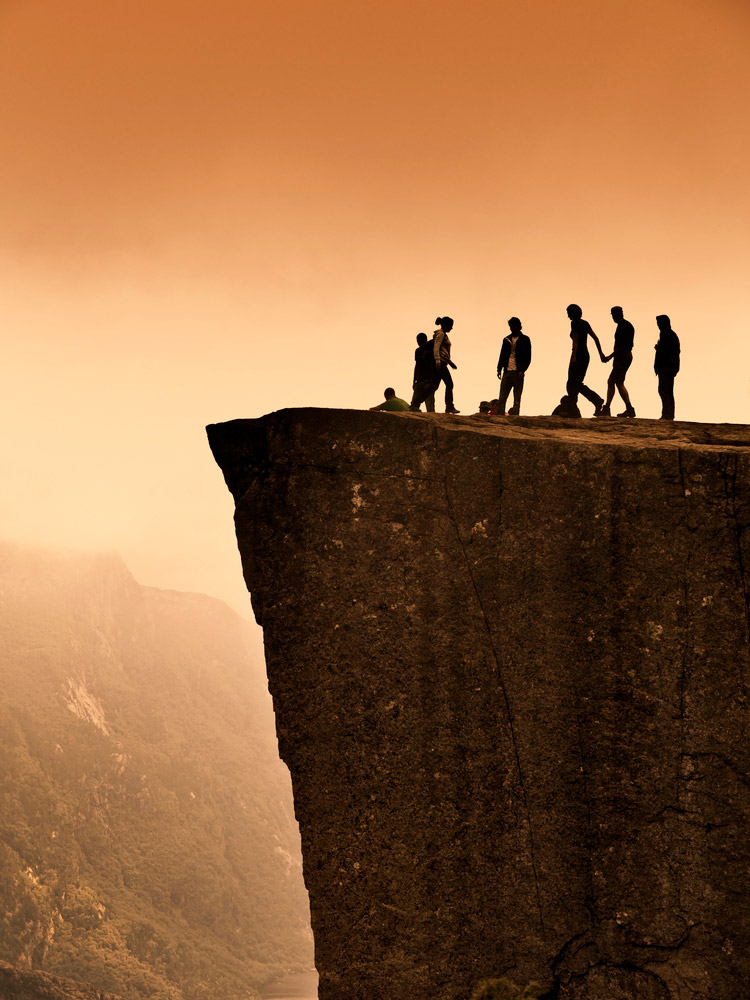
Accommodation in these hotspots often books up months in advance. Prices rise, queues form, and some places begin to feel more like tourist attractions than the serene, authentic Norway that many visitors are hoping to find.
That said, it’s still very possible to find peace and quiet in summer. You may just need to start your hikes earlier, plan further ahead, or explore slightly off the main tourist trail.
2. Higher Prices Across the Board
Norway is never a budget destination, but summer is when prices are at their highest.
Hotels and guesthouses often raise their rates in July and August. Rental cars can be difficult to find and are significantly more expensive than in the off-season.
While restaurant prices tend to stay consistent throughout the year, the increased demand in summer means reservations are more important than ever — especially in tourist-heavy areas.
If you're watching your spending, consider travelling in June or early September. These shoulder-season months often bring similar weather and daylight hours, but with lower prices and fewer crowds.
3. The Weather Can Still Surprise You
Although summer gives you the best odds of good weather, it’s by no means guaranteed.
Western Norway, especially around Bergen, remains rainy even in July. Sudden downpours, fog, and chilly winds can appear without much warning. Cold snaps happen from time to time, and even in the height of summer, you might need a fleece jacket when hiking in the mountains.
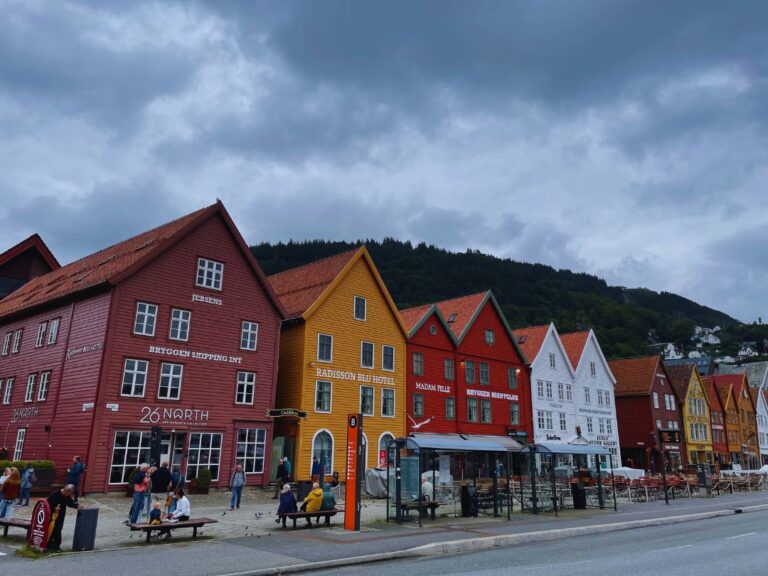
It’s wise to pack for a variety of conditions. Bring a waterproof jacket and some warm layers, and don’t forget sunscreen and sunglasses for when the sun does come out. Norwegian weather often delivers a bit of everything in the same day.
4. Transport Can Be Busy
Even though everything is running at full capacity in summer, getting around can still be a challenge.
Trains between Oslo and Bergen, buses to fjord regions, and coastal ferries can all sell out. Queues for local car ferries are common, especially on weekends or popular scenic routes. Flights to and from northern Norway also fill up quickly and tend to be more expensive during the peak season.
It’s important to book transport in advance wherever possible, and to build some flexibility into your plans in case of delays or full departures.
If you’re renting a car, do it well ahead of time. That's especially true in the north, where supply is limited and prices rise steeply. One-way drop-offs can be costly or unavailable altogether, so plan your route carefully.
Top Summer Destinations in Norway
Whether you're drawn to dramatic fjords, Arctic adventures, or charming coastal towns, Norway offers something for every kind of summer traveller. Here are some of the top destinations to consider during the summer season:
1. The Lofoten Islands
Few places capture the magic of a Norwegian summer like Lofoten. Jagged peaks rise from turquoise waters, traditional red fishing cabins (rorbuer) line the shore, and white-sand beaches stretch beneath midnight sun skies.
Summer is the ideal time to explore Lofoten’s hiking trails, kayak between islands, or try your hand at fishing. Be warned, though — it’s become incredibly popular. If you want to avoid the crowds, consider staying in nearby Vesterålen instead for a quieter but equally beautiful alternative.
2. Geirangerfjord and the Fjord Region
Norway’s UNESCO-listed fjords are an obvious summer highlight. Geirangerfjord, with its towering cliffs and waterfalls like the Seven Sisters, is world-famous for a reason.
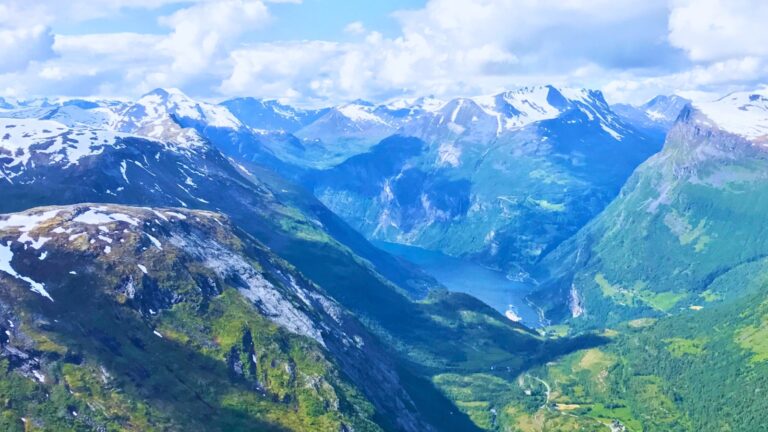
Cruises, road trips, and even kayak tours offer different perspectives of this stunning natural landscape.
For those looking to combine fjords with charming villages, the Sognefjord area is also worth a look, particularly Balestrand or Solvorn. Flåm is another popular base, but it gets very busy, so early booking is essential.
3. The Atlantic Road and Northwest Coast
Often overlooked in favour of the southern fjords, the northwest coast between Kristiansund and Molde offers rugged coastal scenery, fewer tourists, and one of the most dramatic road trips in Norway: the Atlantic Ocean Road.
Summer is the perfect time to drive this route, stopping off in small fishing villages, hiking to coastal viewpoints, or simply enjoying the salty breeze and ever-changing light of the open ocean.
4. Tromsø and Northern Norway
Tromsø is usually associated with the northern lights and polar nights, but summer in the Arctic is a completely different experience. Think hikes under the midnight sun, sea kayaking, and wild beaches with no one else around.
From Tromsø, you can continue exploring by car or ferry to Senja, one of Norway’s most spectacular islands, or further north to Alta and Hammerfest. It’s a vast region and summer gives you the time and daylight to really explore it.
5. Bergen and the West Coast
Norway’s second city is a fantastic summer destination in its own right. Wander the historic Bryggen wharf, ride the Fløibanen funicular for sweeping views of the city and fjord, and hop on a fjord cruise without needing to rent a car.
Bergen also serves as a convenient jumping-off point for exploring the Hardangerfjord region, home to waterfalls, fruit farms, and the spectacular Trolltunga hike, which is best tackled in summer once the snow has cleared.
6. Southern Norway (Sørlandet)
Looking for a more relaxed, low-key summer vibe? Southern Norway’s coastline offers sunshine, white wooden towns, and sheltered beaches. Towns like Arendal, Grimstad and Risør come alive in the summer, drawing both locals and in-the-know visitors.
This is Norway’s answer to a traditional seaside holiday, and while it lacks the drama of the fjords or Arctic north, it’s perfect for swimming, boating, and unwinding in the sun.
7. Jotunheimen National Park
For serious hikers, Jotunheimen is the ultimate summer playground. Home to Norway’s highest peaks, glacier-fed lakes, and dramatic ridgelines, the park offers a range of routes from multi-day hut-to-hut treks to day hikes like Besseggen.
The season is short—typically late June to early September—but during that time, the trails are well-marked, the DNT mountain lodges are open, and the scenery is second to none.
Is Summer Right for Your Norwegian Adventure?
Summer in Norway is spectacular. The landscapes are at their most accessible, the energy is vibrant, and the sheer amount of daylight feels like an open invitation to explore.
🇳🇴 Norway Travel Resources: Make the most of your summer trip by bagging the best deals in advance:
🛏️ Hotel Bookings
💊 Travel Insurance
🚘 Car Rental in Norway
📸 Book Norway Tours & Experiences
Whether you want to hike mountain trails, cruise through mirror-like fjords, cycle along the coast, or simply relax in a scenic village with fresh strawberries and a view, it’s all possible in summer.
But summer also demands more from travellers. Planning, flexibility, and a realistic budget are key. If you’re someone who prefers a slower pace, solitude, or winter landscapes, this may not be your ideal time.
But if you're ready to embrace the buzz of high season and soak up the best nature Norway has to offer, summer is waiting in all its bright, boundless beauty.

